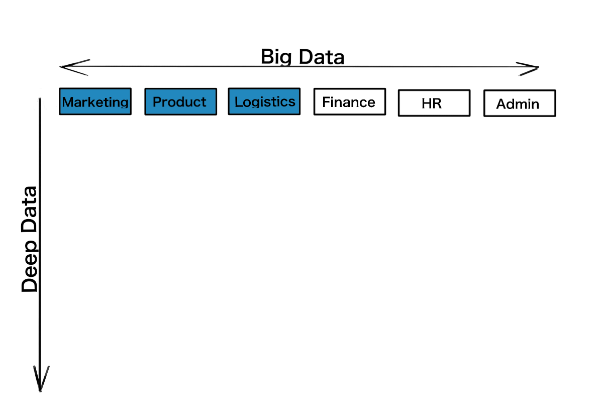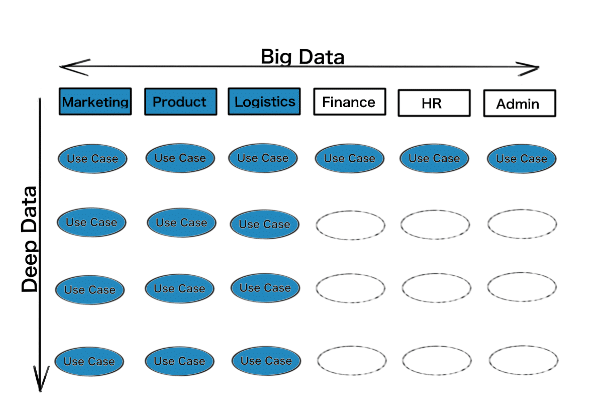My Approach
The Deep Data Approach

What is Big Data?
Big Data describes the collection and rapid processing of large volumes of data from a multitude of sources with high veracity for the purpose of extracting value from it.
It is often described in more detail with the five Vs:
1. Volume: The sheer amount of data. Even small companies easily collect terabytes or petabytes of data within a given year.
2. Velocity: The speed of processing huge amounts of data is essential when wanting to make use of it. If the processing capacities are too small, large volumes of information become useless.
3. Variety: Big Data is diverse. It stems from a multitude of sources and appears in all kinds of shapes and forms, but always in one of three categories: Structured (e.g. CSV files, text, Excel documents), Semi Structured (Containerised data like JSON or XML files), and Unstructured Data (e.g. pictures, videos, pdfs, etc.).
4. Veracity: The quality of the data, also called data integrity. This comments on the amount of “truth” data holds, and how it must be treated in order to accurately display information about a topic.
5. Value: The most important and elusive one of the five Vs: Big Data owes it promise to change our world to the extraction of value from it.:
Where is the problem with Big Data?
The main problem with Big Data is its biggest advantage at the same time: It was never more affordable to collect gigantic amounts of information. The availability of cheap (cloud) storage and computing power in vast quantities have led us to a point where it is more expensive to think about what data to throw away than to simply keep storing it. We have cluttered our environments and become data hoarders, increasingly unable to focus on what really makes the difference between success and failure – the Core Value Drivers of a business model.
What are Core Value Drivers?
Core Value Drivers describe the operations that are directly responsible for the value creation of a company. For example, the Core Value Drivers of an e-commerce company can be customer acquisition, customer retention, and fast shipping of goods. This would translate to the functions of marketing (acquisition), product (retention through a great product experience), and logistics (e.g. same day delivery).
How exactly do Big Data and Deep Data differ?
Big Data describes the collection and rapid processing of large volumes of data from a multitude of sources with high veracity for the purpose of extracting value from it.
Deep Data describes the collection and rapid processing of highly curated, specifically chosen, and well modelled data sets from a small amount of sources with extremely high veracity for the purpose of extracting deep value from it.

Big Data or Deep Data - what to focus on?
While the concept of Big Data is still important for building up infrastructures that allow to extract value from data in the first place, it should be understood as as “basic setup” and therefore the launchpad for a data-driven future of any company. True value does not come from analysing and processing all available data but rather from picking and choosing very carefully where to stay on the surface and where to dig deep.
This is where the focus on the Core Value Drivers comes into play again. An integral part of a well thought out data strategy is a thorough analysis of where investments in Deep Data pay off the most.